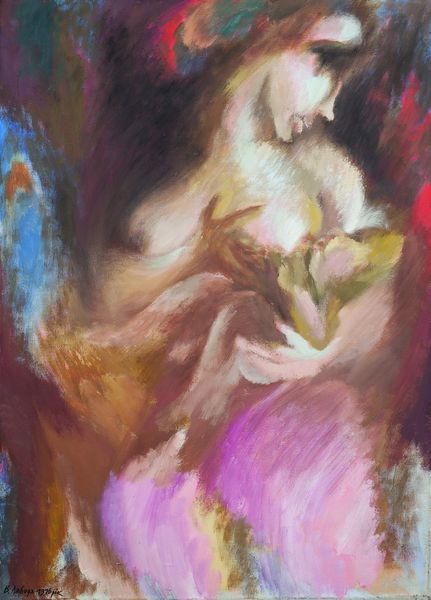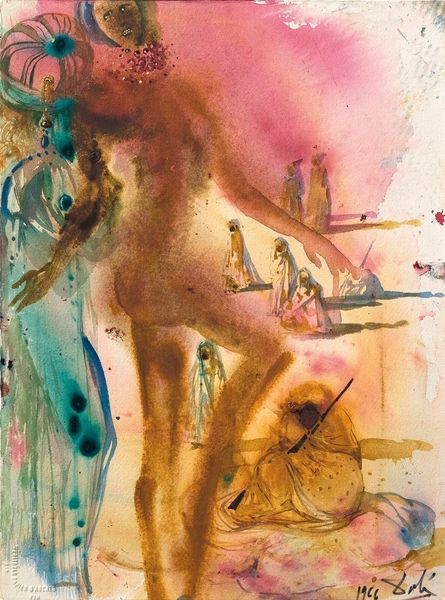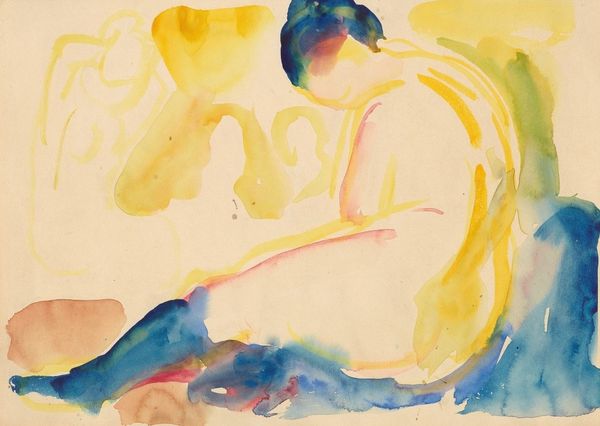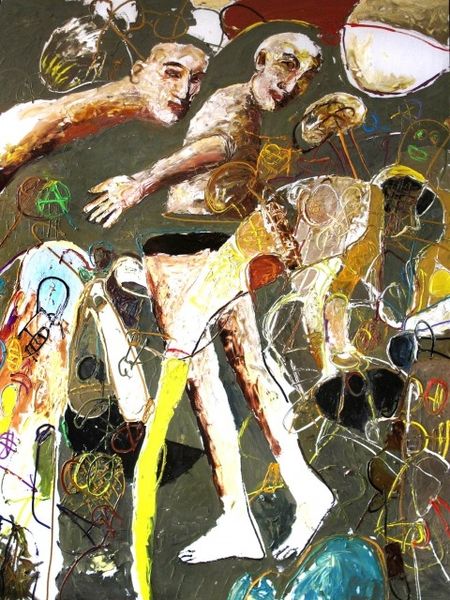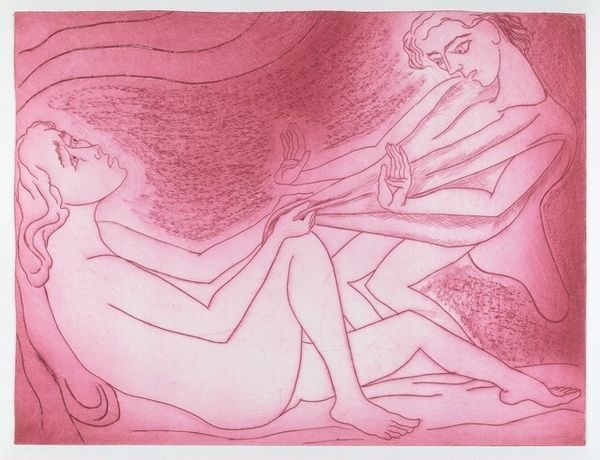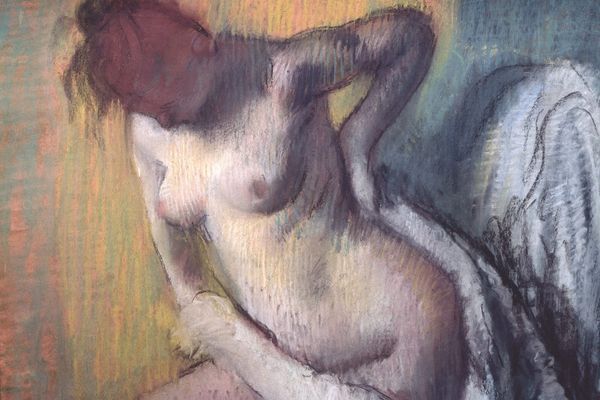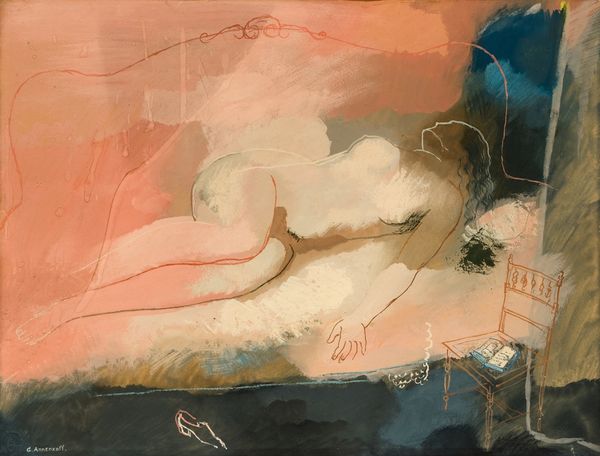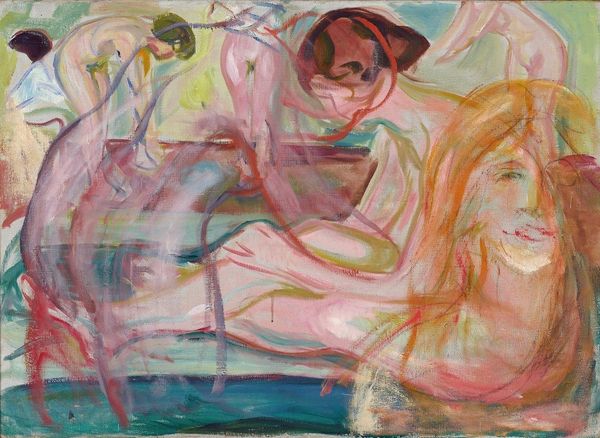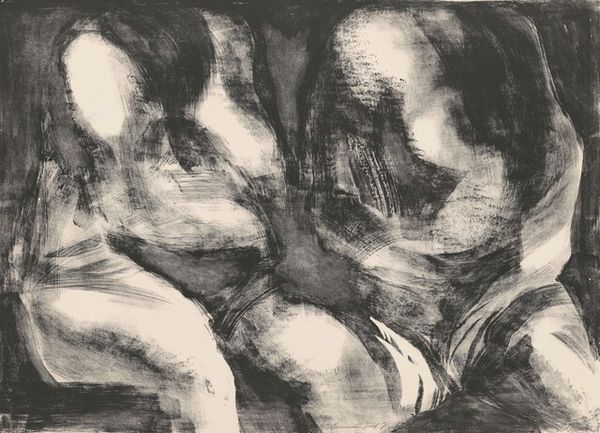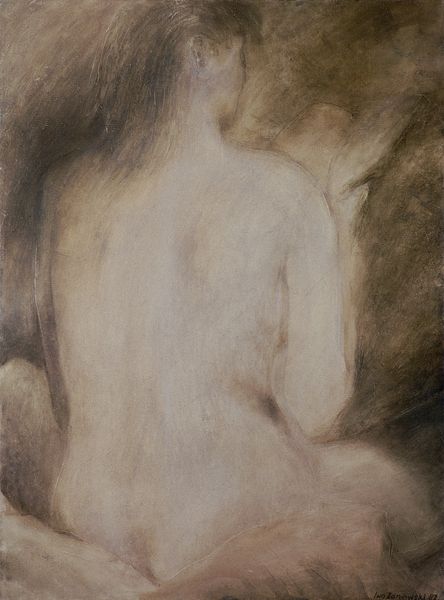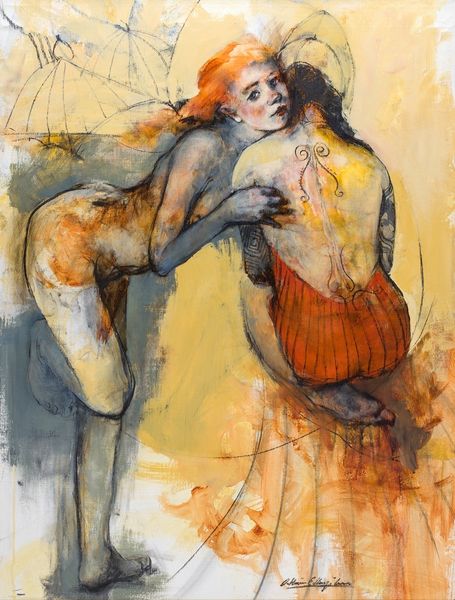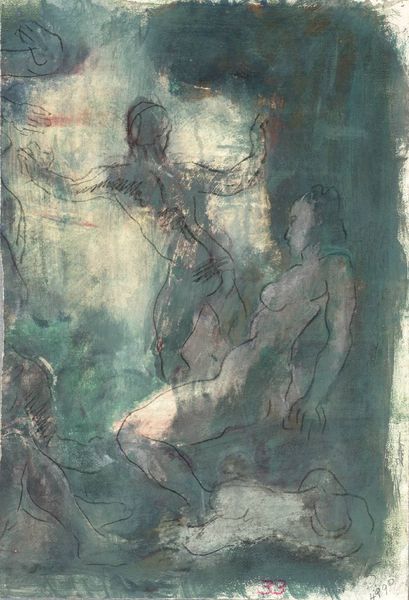
drawing, paper, ink, pen
#
portrait
#
drawing
#
contemporary
#
figuration
#
paper
#
ink
#
pen
#
nude
#
surrealism
#
erotic-art
Copyright: Modern Artists: Artvee
Curator: Well, here we have Salvador Dalí’s "Deux Nues Érotiques," executed in 1966. It’s an ink and pen drawing on paper. The ethereal, flowing lines give it an almost dreamlike quality. Editor: It's instantly evocative; that red ink is striking, contrasting against the soft pinks. There's something about the kneeling figure that feels like a reaching towards something unattainable. It gives an impression of yearning. Curator: Interesting. To me, the eroticism isn’t merely about bodies. It’s more in the lines themselves—delicate and fragmented—almost hesitant, yet undeniably charged. How might this tie into cultural understandings of erotic art and its role in expressing taboo subjects? Editor: I see your point. During the 1960s, societal norms were shifting rapidly, and sexuality was being explored more openly in art. Dalí often played with Freudian themes. The two figures almost seem to be manifestations of a single psyche, inner desires perhaps externalized during a moment of changing social roles for woman and men. Curator: Indeed, psychoanalysis was always present for him, but consider also the symbolism. There’s a recurring visual motif here in which celestial figures act as goddesses, the bodies almost like constellations plotted into existence by Dalí’s line work. How might such symbols perpetuate a mythic representation of women? Editor: Maybe it's a double-edged sword. He seems to almost grant them agency and mystery while also essentializing their form. What do you make of the smaller details scattered on the woman’s body and along their linking line? Curator: They remind me of tattoos, acting as signs of personal marking on the flesh. One must consider whether these annotations express agency or confinement? In cultural contexts, markings often denoted status and rituals of passage; it appears there may be a dialogue happening within Dalí’s visual world, where history, religion, mythology, and politics come together. Editor: Looking at it now with your points in mind, this work truly sits at a complicated intersection of history, personal desire, and art history, challenging me to think about whose voice the piece foregrounds and if a single understanding can exist. Curator: Absolutely, the artwork serves as an entry point into the complex ways in which sexuality and societal structures influence artistic representation and challenge the modern understanding of gender identity.
Comments
No comments
Be the first to comment and join the conversation on the ultimate creative platform.
